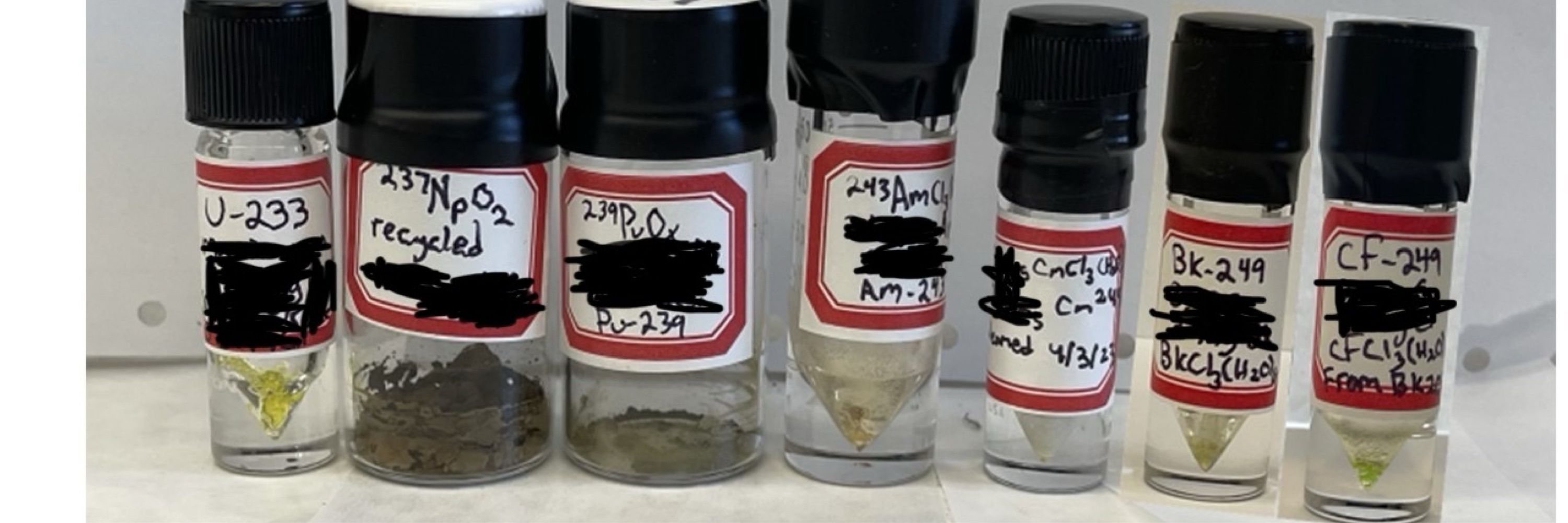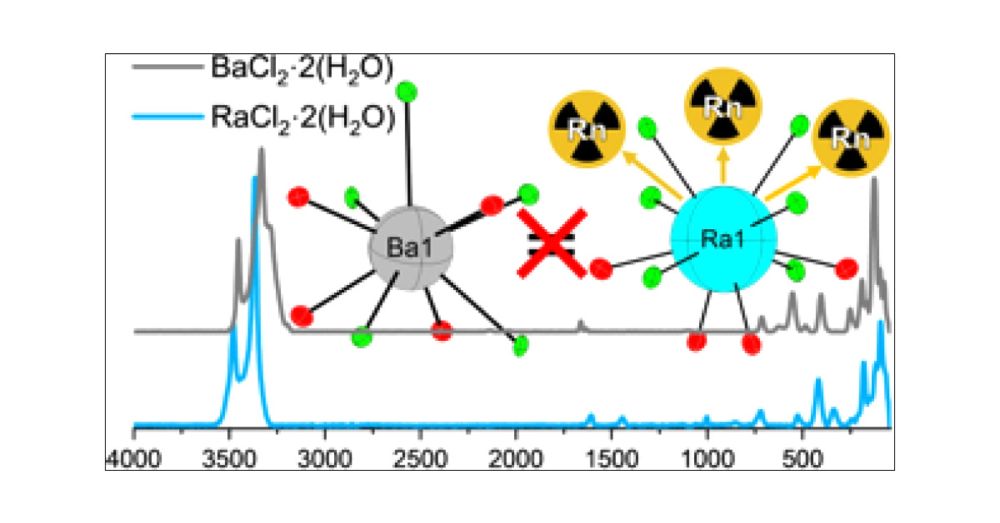Joe Sperling
@jsperling91.bsky.social
36 followers
29 following
8 posts
Research assistant professor at Colorado School of Mines. Still on X but didn’t wanna miss the science on here. Actinides are neat.
Posts
Media
Videos
Starter Packs
Joe Sperling
@jsperling91.bsky.social
· Aug 20

Non–linear bonding trends in maleonitrile-1,2–dithiolate complexes of the transuranium actinides - Nature Communications
Although the trivalent actinides are similar to the lanthanide series in terms of chemistry and bonding, their structures and properties can diverge significantly. Here, the authors report a series of...
www.nature.com
Joe Sperling
@jsperling91.bsky.social
· Jun 10

Effects of the Inverse Trans-Influence in a Berkelium(III) Phosphine Oxide Complex
An example of a 249Bk3+ phosphine oxide complex has been prepared to examine and quantify the effects of the inverse trans-influence (ITI) on a late actinide complex. This has been accomplished through a comparison of cis and trans Bk-ligand bonds in the meridional berkelium(III) complex, BkBr3(OPCy3)3 (OPCy3 = tricyclohexylphosphine oxide). A detailed bond metric analysis was completed that includes the shortest published distance for a Bk3+–O bond, attributed to the smaller coordination number of Bk3+ of six in mer-BkBr3(OPCy3)3. ITI calculations of the trans Bk3+–O bond provide an ITI value (98.5(2)%) comparable to that of mer-AmBr3(OPCy3)3 (98.2(2)%) and indicate a small 5f orbital contribution to bonding. This effect is discussed in the context of the isomorphous lanthanide(III) series where the ITI is calculated to be higher for mer-BkBr3(OPCy3)3 than in most Ln3+ analogues.
pubs.acs.org
Joe Sperling
@jsperling91.bsky.social
· May 13

Unveiling the covalency of versatile Pu(iii)-N bonds in a unique plutonium(iii) complex
A trivalent plutonium–pyrazinyl–tetrazolate complex Na2[Pu(Hdtp)(dtp)2(H2O)4]·9H2O (Pu_dtp, H2dtp = 2,3-di-1H-tetrazol-5-ylpyrazine) was synthesized through metathesis reaction of plutonium bromide an...
pubs.rsc.org
Joe Sperling
@jsperling91.bsky.social
· Mar 12

Insights into the Complexation of Actinides by Diethylenetriaminepentaacetic Acid from Characterization of the Americium(III) Complex
Diethylenetriaminepentaacetic acid (DTPA) is a frequently used chelator in the nuclear and medical industries, especially for the complexation of trivalent actinides. However, structural data on these complexes in the solid-state have long remained elusive. Herein, a detailed structural analysis of the presented crystal structures of [C(NH2)3]4[Nd(DTPA)]2·nH2O and [C(NH2)3]4[Am(DTPA)]2·nH2O, where [C(NH2)3]+ is guanidinium, details the subtle differences in the Lewis acidity between a lanthanide/actinide pair of similar ionic sizes. Contractions in nitrogen–metal bond lengths between neodymium(III) and americium(III) were observed, while the metal–oxygen bonds remained relatively consistent, highlighting the marginal favorability for actinide complexation over the lanthanides with moderately soft N-donors. Spectroscopic analysis shows significant splitting of many transitions and relatively strong electronic interactions with traditionally low-intensity transitions in the americium complex, as is demonstrated in the 7F0→7F5 transitions. Pressure-induced spectroscopic analysis showed surprisingly little effect on the americium complex, with 5f→5f transitions either not shifting or marginally shifting from 2 to 3 nm at 11.93 ± 0.06 GPa─atypical of a soft, N-donor americium complex under pressure. Large voids occupied by water molecules in between the complexes within the crystal structure may be responsible for the lack of pressure response in the 5f→5f transitions.
pubs.acs.org











